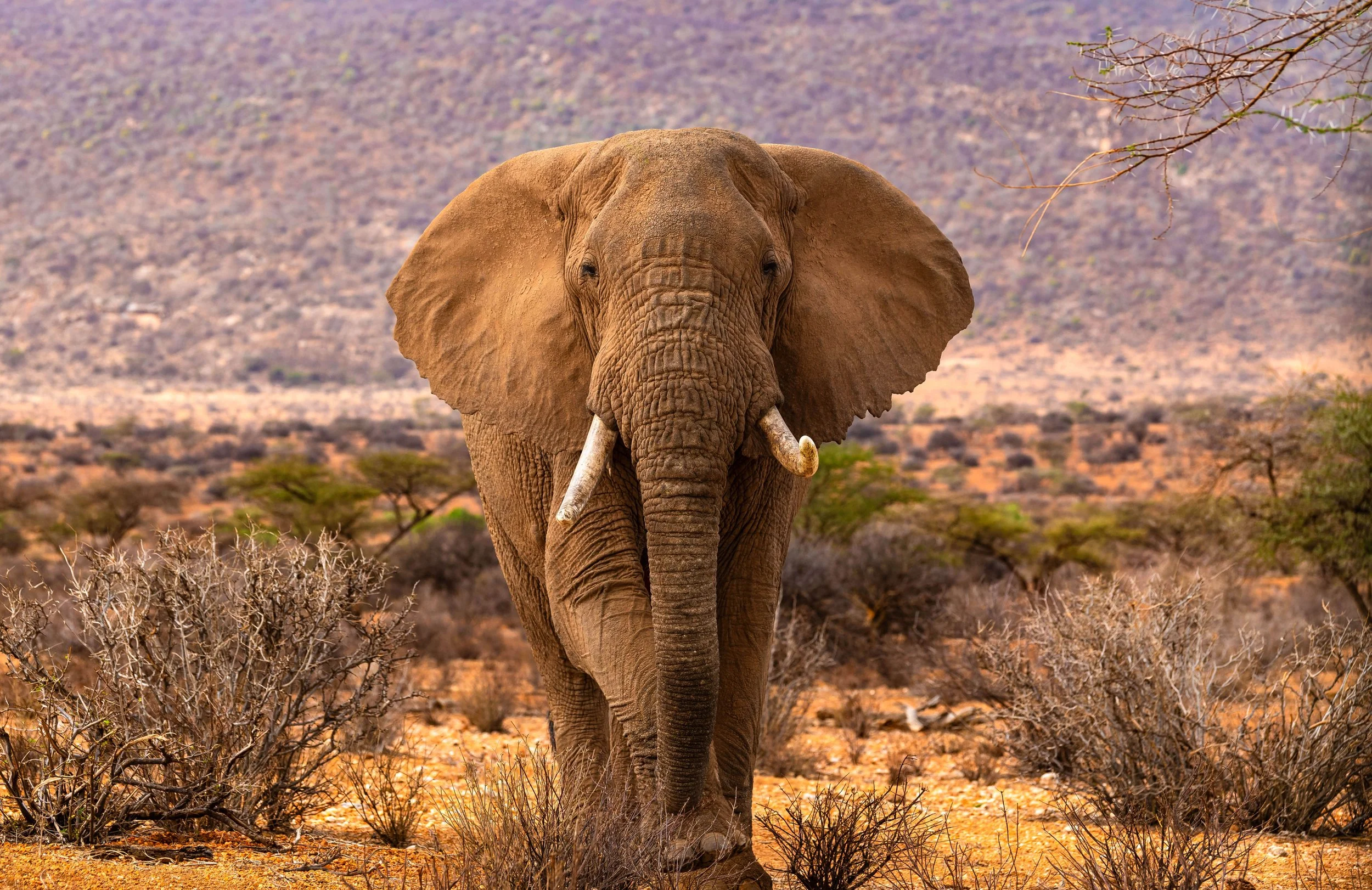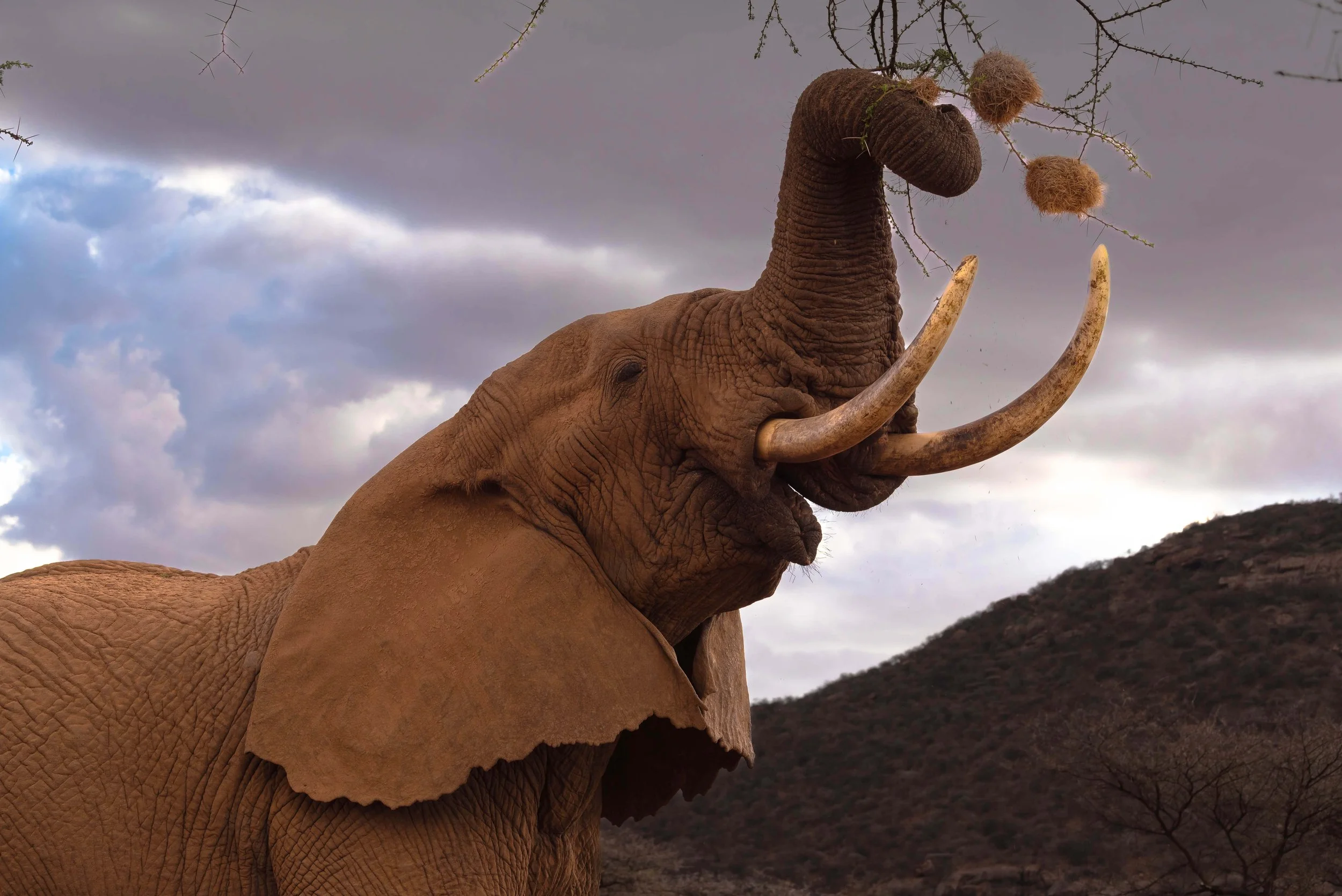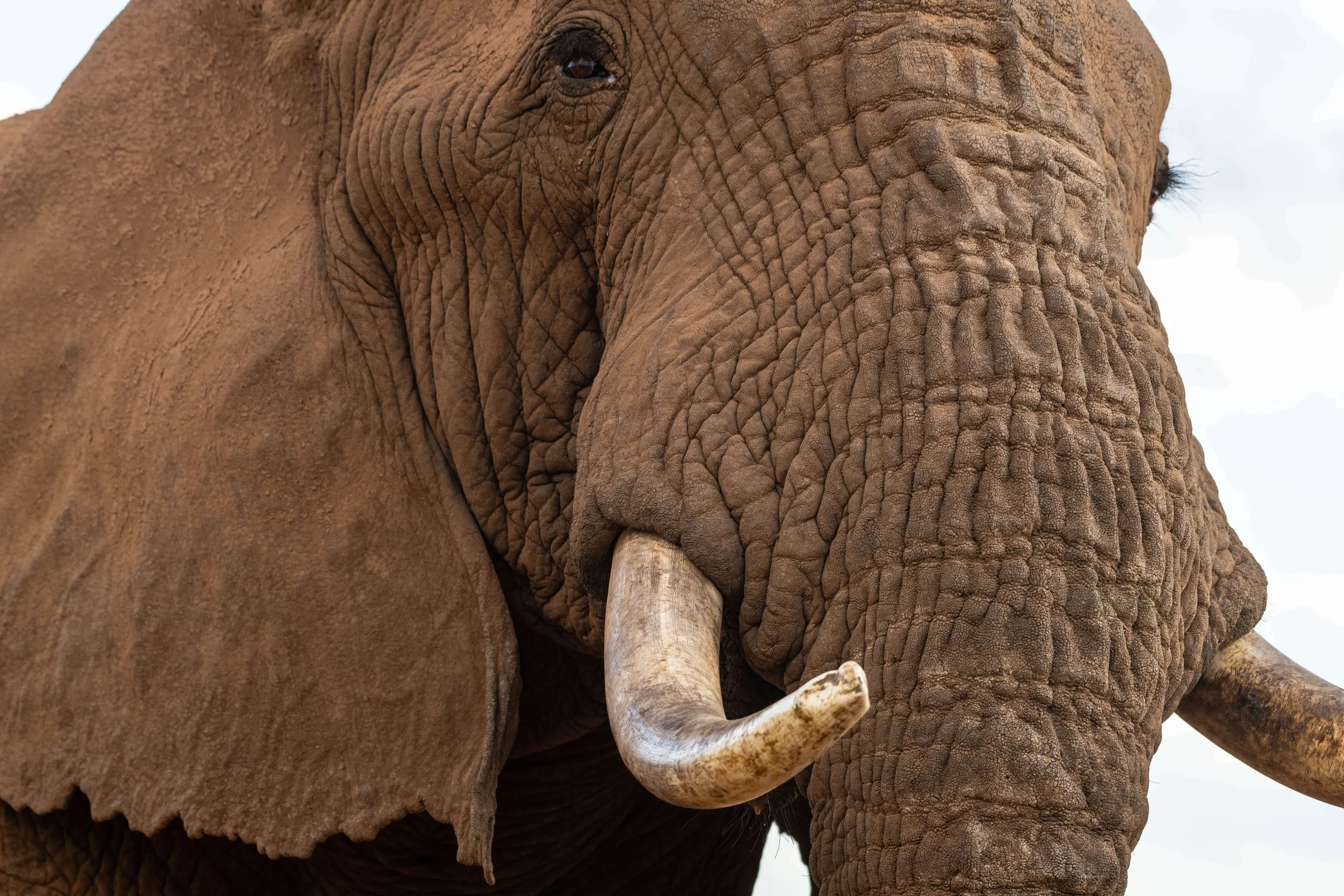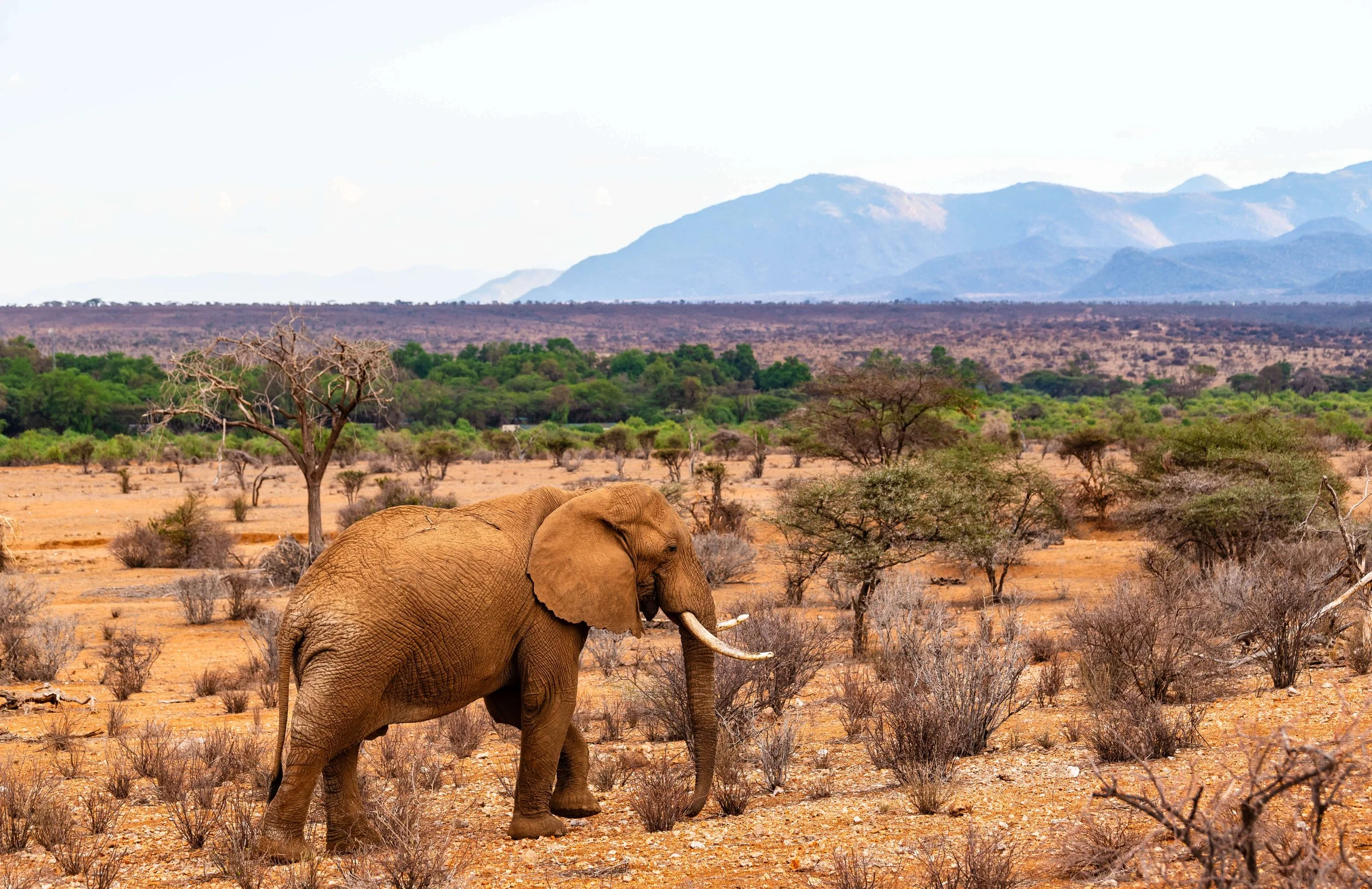Elephant Part III
Elephants In The Wild
Ten years ago, if you’d asked me if I had ever seen an elephant, I would have said, “Sure, at the zoo.”
Most of us are like that. Most of us have never seen elephants in their natural habitat . . . until Africa comes calling. Africa changes everything.
I got to see my first elephant in the wild in 2019 and many elephants thereafter. One of our guides, who was well versed in elephant research, told us that elephants have a tremendous system for picking up vibrations with their feet, how those vibrations travel up the boney structures to the brain of elephants, and how complex mental maps are then created, maps of sources of water throughout the world! Water vibrates quite readily, completely distinct from land.
I was astonished. I wondered what else elephants were picking up through their feet. Out on the Serengeti, I was a long way from that bored elephant in the zoo kicking the ball around.
River Crossing
Elephants are fascinating animals. Clearly intelligent, elephants remember every food source, every watering hole, every relationship whether with other elephants or with humans. They are called the makers or engineers of the savannah: they push down thickly grown areas of trees, creating pathways for the migrating species. They delight in play. They have multiple communication systems. They will make a meal out of anything that is edible, even birds’ nests.
Elephants live in families of mothers and their babies, often with multiple family groups living and traveling together. Bull elephants live in small herds, but some bull elephants are more solitary. This is the story of a solitary bull elephant we met in Samburu, Kenya in 2022. We first watched Sarara cross the Ewaso Ng’iro River. The river had water from recent rains in the nearby mountains. It had a good current and was wading high for an elephant. Sarara walked along the river bank on the northern side before deciding where he would cross, then plodded slowly into the river, his huge size strong against the current. We pulled our jeep around to meet him as he climbed out of the river on the southern side. He eyed us warily initially. He was accustomed to traveling alone. We stopped our vehicle and spoke softly to him. He turned toward us in a friendly manner and nibbled a little on a bush, then wandered off down the dirt path, looking back just enough to eye us slightly.
We followed him along our sandy road a bit and encountered him at a crossroads. He was a large fellow, not entirely sure about our efforts to commune with him. He did not know that we had come to Kenya to study, photograph, and write about elephants. Samburu was supposed to be full of elephants. But sadly, this was not the case. It was the dry season, during a drought, only green on a short stretch right along the river. Our camp, Elephant Watch, was usually frequented by elephants. We never saw a single elephant there during our five day stay. Elephants need water, and they need a lot of vegetation to eat. We were told that most of them had gone up to the conservancy to the north of where we were staying. A couple of years earlier, the whole area had been filled with elephants.
On our third day in Samburu, we decided to go search for leopards up among the dry, rocky areas. Leopards are hard to spot because of their ability to stay low to the ground or up in trees and blend in. We had exhausted our search in the green along the river. So we headed out among the dirt roads and paths in the dry areas. The trees were dormant or dead, as were the grasses and small shrubs. The smell of drought filled the dry creek beds. No leopards were found. But then we encountered Sarara. He was foraging out in this dry hill area among the trees. We saw him from a distance and drew our vehicle closer to get a good view. We sat and photographed him from a distance. As we maneuvered the land cruiser closer, we sent him good vibes, our good intentions, speaking very softly to him. At first he was wary, changed his position a few times, but gradually he grew accustomed to our presence and allowed us to park some fifteen to twenty feet away. He had found a tree with old weaver birds’ nests that hung around the edges of the thorn tree, and he was feasting there on the nests, reaching up and wrapping his trunk around the tiny branches where the nests hung. He tugged on them until they broke, then popped the nest into his mouth with his trunk. Those birds’ nests must have been tasty because he repeated this process over and over.
We sat with Sarara for at least a half an hour or more, quietly communing with him as he fed on the weaver nests of one particular tree. As we were communing with him, we photographed him going about his business. But what happened next astonished us. After some time, Sarara walked right up to our jeep. We could have touched him, he was so close. He loomed over our heads like the giant he was. Every fold in his skin was visible to us, every bit of caked on dirt, every bit of his beautiful eyes with their long lashes. I sat there speechless, in awe, the camera dropped to my lap. I was not sure if the clicks of the camera might disturb him, but my husband took several shots. He munched on a tree overhead, eventually turning and walking to the back of the vehicle. There was a smallish tree there. Sarara simply knocked it down, stepping on it as he went. Sarara, maker of the savannah!
I couldn’t help wondering if there was a message in the manner of Sarara’s departure. There would have been room for Sarara to back up a few paces and turn and go around the tree. But he did not choose that route. Sarara was big enough and strong enough to have pushed over our vehicle if he wanted to, but chose a smallish tree instead. Was he underscoring his generosity to us? Was he clearing a path for us? Or was he there showing us something he could do? We’ll never know for sure. He was clearly an intelligent and purposeful being with a mind of his own.
The next day we visited Save the Elephants in Samburu. We learned something about Sarara. Sarara was known to Save the Elephants. It was heartbreaking for them when Sarara was deeply wounded in the muscle of his side by the spear of an angry farmer whose crop he had molested. Sarara was found by the folks at Save the Elephants camp. They brought him into the camp, treated his wounds, and he stayed there recovering for two weeks. Sarara became quite attached to the staff there and would come back to visit them after he left. He was dearly loved by all. Sarara was especially attached to the man who had most tended to him during his illness. At times he would come to his tent where Jacobo slept. Jacobo woke up and found Sarara looking in at him. The staff at Save the Elephants described Sarara as a wild animal but one with whom they could feel such a deep connection.
Sarara was known to Elephant Watch camp where we stayed. The night after our visit with Save the Elephants, Sarara returned to Elephant Watch and visited Dennis, our driver and guide. He came to his tent and shook the beams of the tent, awakening Dennis. Dennis told him to stop and finally had to tell Sarara to go away, lest he break the tent apart. . . . I’ve always wondered what Sarara was trying to communicate to Dennis.










